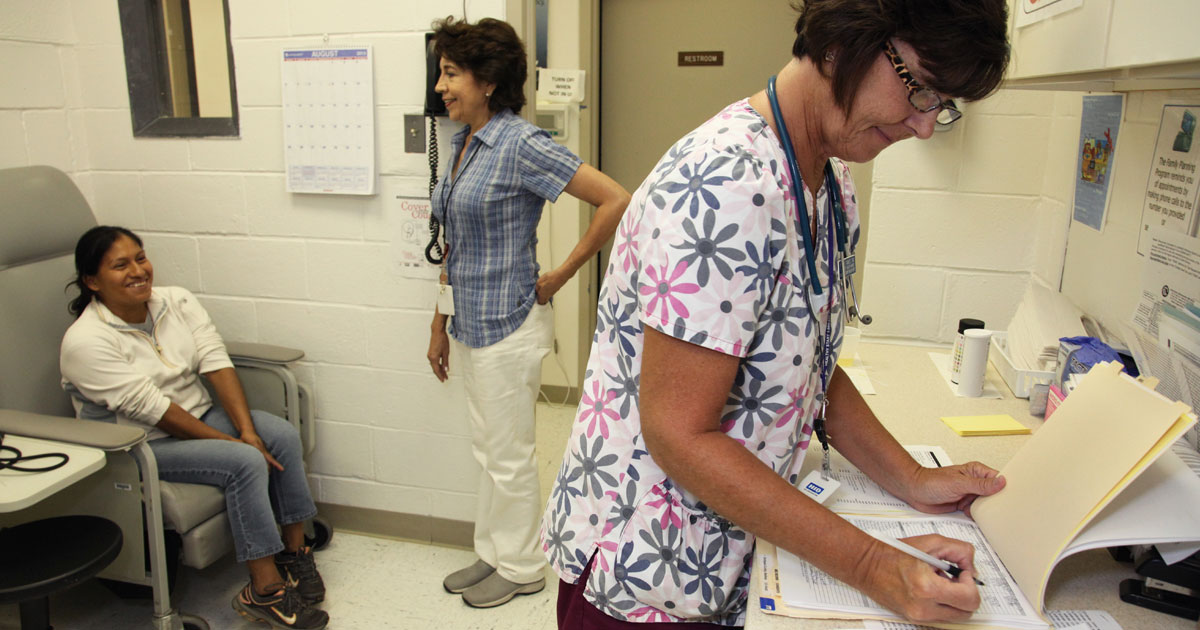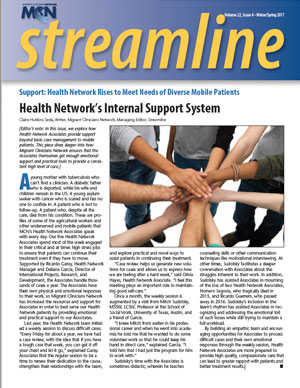Privileging, Hospital-Style

By Claire Hutkins Seda, Writer, Migrant Clinicians Network, Managing Editor, Streamline
Health centers aren’t hospitals. Centers focused on outpatient care cannot be built exactly like centers focused on inpatient care. They have different funders, reporting requirements, supported specialties, services, and targeted patient populations. Accordingly, a health center’s structure is different than a hospital’s. However, sometimes a hospital construct can lead to a health center innovation. At SAC Health System (SACHS) in San Bernardino, California, the local hospital informed their own provider privileging processes -- leading to a model that has promise in the health center world.
When SACHS first started as a grant-sponsored community clinic associated with Loma Linda University and Medical Center, the providers serving the clinic were also working in the medical center -- and consequently went through credentialing and privileging (C&P) with the medical center, which included a hospital and research facilities. They continued having joint privileging systems as SACHS transitioned into a Health Center Program look-alike, on their path to becoming a federally funded health center. Finally, in 2013, SACHS became a Health Center Program award recipient under Section 330, the term to denote that SACHS was finally a federally funded health center. Despite the transition, they have maintained their hospital-style privileging -- which has the health center leading the way to efficiently approach the important program requirement.
“Big hospital organizations establish a medical staff that runs through a lot of quality pieces. We are really mimicking that here -- that’s where our expertise comes from,” described Jane Atkins, Chief Officer of Quality and Compliance at SACHS.
The hospital supports privileging renewal through a computer-based analysis. The basis of the system is a computer program within the billing system that “pulls all the provider’s procedures [conducted within] the last two years,” explained Angela Teresi, Credentialing Specialist for SACHS. The system tallies how many of each procedure the provider has completed. Then any claims history is matched to the procedures, which is red-flagged for reappointment time, she said. A service chief reviews the information and speaks directly with the clinician to determine what level of proctoring or monitoring, if any, is required as a result of any claims. “If they haven’t done a procedure in the last two years, then they won’t grant them that privilege,” Teresi noted. “If they want the privilege back, then they’ll do a proctoring or mentoring [in which] they set up a plan and focus on that procedure,” which keeps providers up-to-date on newer techniques and eliminates paperwork and staff time to continue privileging tasks that go unused. It also ensures that providers’ skills are closely matched up with what they’re doing in the exam room.
The process also eliminates a health center’s struggle to determine which procedures a provider should be privileged for, by only privileging the necessary skills and ensuring those skills are kept up-to-date through additional training when needed. Medical Directors that oversee each department within the health center including its specialty clinics have oversight over the process, and conduct privileging meetings with providers to make sure they are confident in their providers. “They vouch for the provider that they are competent in all the areas that they are requesting privileges for,” Atkins explained. “It’s important.”
Atkins calls the system a “bonus” of working closely with Loma Linda -- it’s a process that is above and beyond the C&P basics required by section 330 but greatly enhances the privileging aspects of the C&P process. During the creation of the health center, medical staff “brought along with them the expertise, with the logging and the tracking,” to build the system that SACHS now uses, which was put into place with the help of a credentialing organization that SACHS contracts with. But Atkins states that most health centers could develop their own tracking system to mimic the process but tailor it to what that particular health center needs -- and the results would be worth it.
What does this mean for agricultural worker patients? In San Bernardino, a more efficient privileging system means specialty clinicians are efficiently privileged for the tasks they routinely complete, and are not required to get privileges for tasks they never use. This means more time for patients like agricultural workers, who may struggle to get an appointment with the clinician they need – even more so than the general population. “Marginalized populations like agricultural workers often have enormous difficulty accessing specialty care,” noted MCN’s Chief Medical Officer, Karen Mountain, MBA, MSN, RN. Agricultural workers, who have higher rates of occupational injury, may need higher access to occupational health, and their mobility limits their ability to accept an appointment scheduled four months out. “This model streamlines that process.”
Resources
- Credentialing and privileging is outlined in the third of HRSA’s 19 Health Center Program requirements. Read a short description here: http://bphc.hrsa.gov/programrequirements/index.html
- MCN’s online toolbox includes sample policies, procedures, and documents useful to health centers in performing credentialing and privileging: http://www.migrantclinician.org/toolsource/85/credentialing-and-privileging/index.html
Read this article in the Spring 2017 issue of Streamline here!
Sign up for our eNewsletter to receive bimonthly news from MCN, including announcements of the next Streamline.
Return to the Streamline Spring 2017 Table of Contents.
